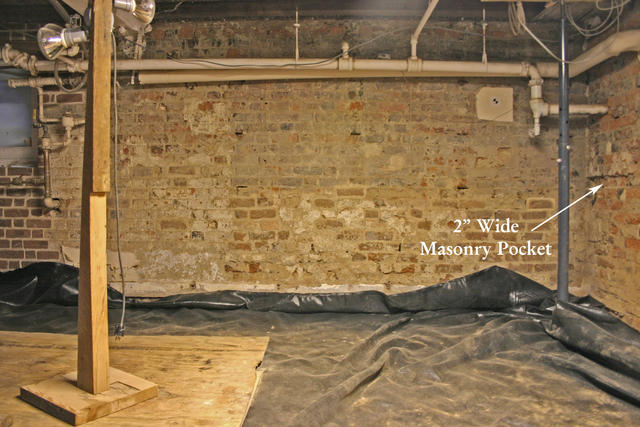
After the plaster was removed from the walls of the kitchen the brickwork was investigated to determine if there was any surviving evidence that would help reveal what the ca. 1812 shelves looked like. However, once the investigation started the Team quickly discovered that Dinsmore and Neilson had built more than just shelves and in fact a full kitchen dresser had been installed in the kitchen. The evidence that convinced the team that this was a dresser instead of a simple set of shelves was a long, two-inch wide pocket on the eastern end of the Kitchen’s south wall. This pocket was located approximately 3' above the floor level and its size indicated that it once anchored one end of a long board that kitchen slaves would have used like a modern counter top. The pocket also supplied the Restoration Team with the approximate width and thickness of the original board (eventually a large piece of heart poplar measuring 1'10-1/2" wide by 2-3/4" thick was selected for the counter).

©The Montpelier Foundation
|
|
The east wall of the North Kitchen after the post-Madison plaster was removed. A pocket in the masonry wall found to the right provided evidence for a large Madison-era countertop and dresser. |







